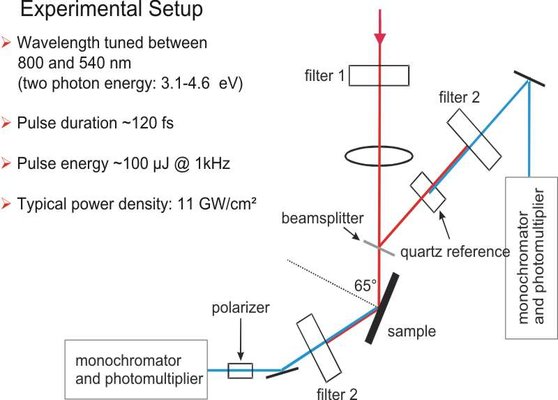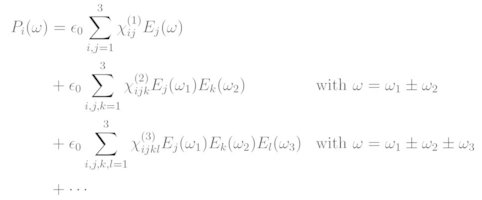
In the dipole approximation, frequency doubling in the volume of inversion-symmetric materials is prohibited. These are, for example, cubic crystals (including silicon), amorphous solids (such as SiO2), liquids or gases. The inversion symmetry is necessarily broken at the interfaces, so that the second harmonic is generated there. The radiation is generated in a layer only a few atomic layers thick at the interface, i.e. SHG spectroscopy is an extremely interface-sensitive measurement method on systems of inversion-symmetric materials (e.g. Si/SiO2).
The experimental setup used for SHG spectroscopy in our working group is shown in the following figure:
From the femtosecond laser systemThe filter set 1 removes unwanted radiation from the laser radiation coming from the femtosecond laser system. The beam splitter reflects part of the remaining laser radiation into a quartz reference sample, in which the SHG signal is generated to normalize the measurement signal. The remaining laser radiation is focused onto the sample by a lens. The fundamental is absorbed by the filter set 2 both behind the sample and behind the quartz crystal, so that the second harmonic can be monochromatized and detected by the photomultiplier without being outshone by the significantly more intense fundamental. A polarizer enables the detection of s- or p-polarized second harmonics.

